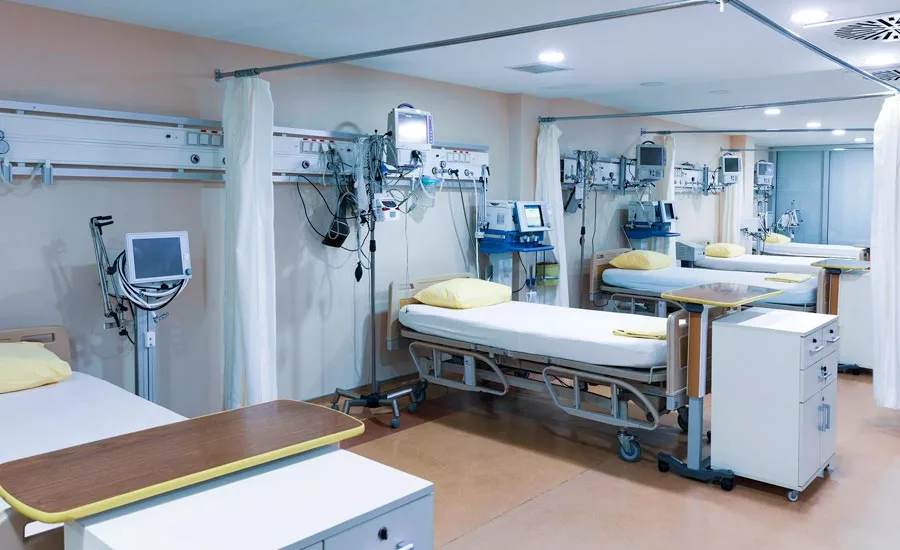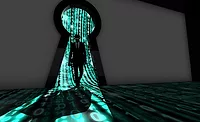Elevating healthcare with artificial intelligence
Artificial intelligence-enabled video surveillance is being used to streamline field-level operations and manage healthcare facilities in a cost-effective way, while adding a layer of security and safety.

JazzIRT / E+ via Getty Images

Hartmut Schaper
With pandemic conditions again at the forefront of hospital operations in many areas, healthcare organizations are finding themselves overwhelmed with cases, understaffed and lacking sufficient supplies and space. Injured by the loss of routine procedures and navigating pandemic health risks to both patients and staff, decision-makers for healthcare facilities have been tasked with finding solutions to manage increased occupancy levels, ensure compliance in usage of personal protective equipment (PPE) and promote social distancing — all while taking patient privacy and hospital operations into account.
Artificial intelligence (AI) isn’t new to medical facilities and is already revolutionizing certain research and development methods of critical disease treatments. However, through the use of smart cameras and Internet of Things (IoT) platforms, AI is being used to streamline field-level operations and manage facilities in a cost-effective way.
When used in the form of apps combined with smart surveillance solutions, AI-infused video analytics can be used to deal with many pain points of healthcare organizations, such as improving parking operations and emergency room (ER) intake methods and assisting in the better planning of walkways and lobbies to reduce chokepoints and foot traffic.
Such technology can prioritize patient privacy while providing long-term flexibility, as new smart camera technology allows for multiple apps to run simultaneously. Here are a few ways smart cameras are being used to improve healthcare facilities at every level.
Prioritizing Privacy
Increased security shouldn’t come at the cost of lost privacy, especially in medical facilities, and navigating the complex legal requirements for video surveillance to protect patient privacy and health information is no small task. Just the fact that a person is in a medical care facility is a sensitive piece of health information. More of this sensitive data is often displayed on computer screens and other devices, such as those used to track patient intake information, which may be captured in a camera’s field of view.
AI-enabled smart cameras can address this through the use of smart video analytics that employ privacy masking. These applications can be designed to hide a configurable set of objects, including laptops, desktop screens, keyboards, mobile devices, PIN pads and people’s faces. For example, a smart camera monitoring a hallway in an intensive care unit (ICU) could mask computer screens as they pass by the field of view or patients’ faces as they pass in and out of rooms.
Falls, Safety and Liability
One of the biggest causes of patient injury in healthcare facilities is when a patient falls, leading to liability claims, extended patient stays and elevated levels of care that can exceed what the hospital is able to charge for its services. In such situations, video surveillance can be a powerful ally to hospital staff, giving personnel real-time notification of a potential slip/fall, allowing them to possibly respond prior to a fall or helping a patient receive immediate attention. Fall detection applications enable cameras to monitor and analyze the behavior of patients using AI video analytics to automatically detect when a person stands upright, lies on the floor or remains seated. Similar analytics can provide the ability to monitor for unusual behavior, such as patients wandering out of their rooms in the middle of the night or visitors attempting to access an unauthorized area.
While it is still uncommon to have smart cameras in patient rooms, such technology can allow medical staff to more closely monitor patient behavior and neutralize potential issues more efficiently. For example, a fall might be prevented if the staff was automatically notified that a patient needed assistance to walk to the bathroom alone in the middle of the night. Privacy is most certainly a question here, which is why today’s cameras are configurable so that no video is transmitted from the patient room unless there is a preset event detected, such as a fall or other unusual behavior. New capabilities in processing video on the edge of a device enable privacy functions beyond simple privacy masking into a space where only pre-configured snippets are sent to relevant personnel. This greatly increases both patient and staff privacy.
Parking, Intakes and License Plate Recognition
Another pain point of nearly any large medical institution is parking and access to emergency services. Smart cameras can assist staff in increasing operational speed and quality by registering patient transport vehicles and automatically logging arrival times, license plate numbers and parties involved.
Smart cameras can employ license plate recognition (LPR) for barrier-free, contactless parking, ensuring that staff-only areas remain clear. For large hospitals with multiple parking garages, smart surveillance can prevent parking violations by providing real-time parking protection for gateless lots or detecting unauthorized parking, minor accidents or potential break-ins and alert security as needed.
These same devices can be used to detect the obstruction of driveways, such as an emergency ambulance bay, and can alert proper personnel to clear the area before it impacts an oncoming emergency vehicle.
Enhancing Security and Safety
Hospital environments are burdened with complex inherent risks, not the least of which is the prevention and early detection of smoke and fire, which can cause devastating damage in facilities where many people are gathered in confined spaces or bed-ridden. Security cameras equipped with AI video analytics can provide 24/7 surveillance, allowing security managers to detect hazards early without constantly monitoring video streams. Applications can help reduce false alarms by enabling cameras to analyze video data and distinguish dangerous from harmless situations, such as menacing smoke from cigarette smoke or sunlight from fire. Additionally, applications can monitor virtual lines inside buildings to notify appropriate personnel if an individual accesses a restricted supply closet stocked with medical equipment, materials or drugs. The app allows human operators to define an unlimited number of areas and virtual lines within a scene, so that the functionality can be fully adapted to individual needs and onsite conditions.
Video analytic applications can also help reduce violent incidents and increase response time by monitoring common areas in hospitals, such as ERs, lobbies and cafeterias for aggressive behavior or acts of violence. Additionally, weapons detection analytics can be used to identify the presence of weapons, alerting security personnel or law enforcement in real-time.
Improving Operations
The capabilities of smart cameras equipped with AI video analytics to analyze video data in real-time and automatically trigger appropriate actions can relieve staff from these types of tasks that are open to human error or burnout. This unlocks great potential for process automation to make operations more efficient and relieves the burden placed on many understaffed and overwhelmed medical centers.
Such technology can also be vital to improving overall facility function by giving decision-makers the information they need to make changes and updates to layout, intake procedures, signage and any other function that can be monitored and improved upon. In short, AI-enabled smart cameras and video surveillance can help healthcare organizations increase patient and employee confidence, reduce risk-related costs, optimize operational processes, and ultimately provide another layer of security and safety.
Looking for a reprint of this article?
From high-res PDFs to custom plaques, order your copy today!








